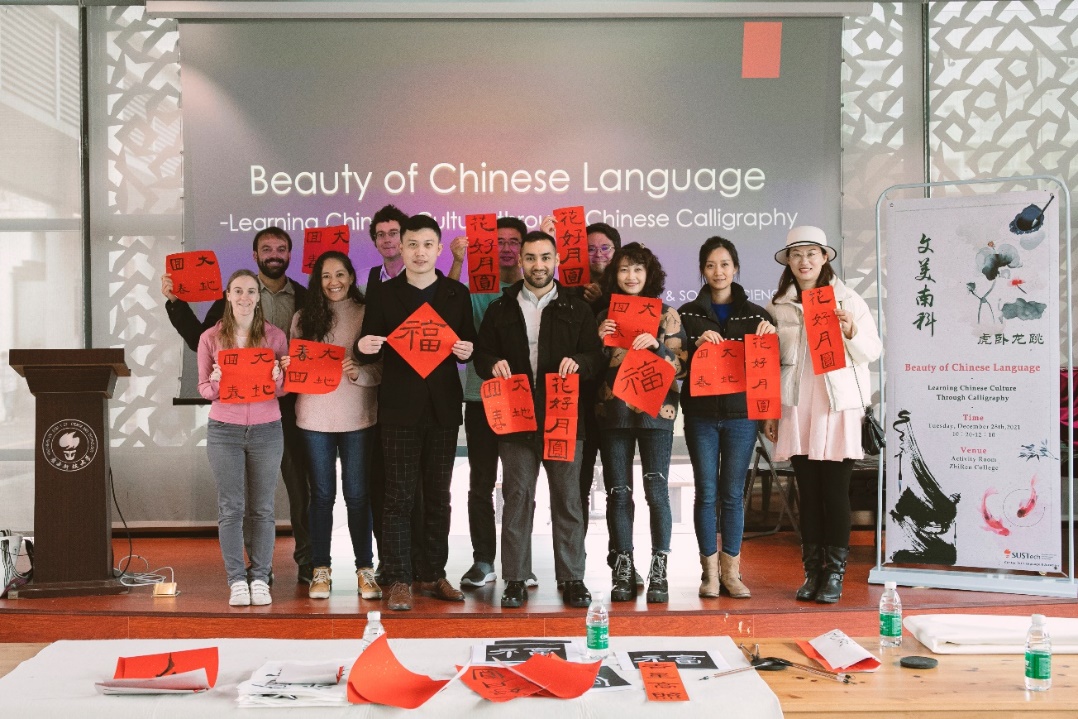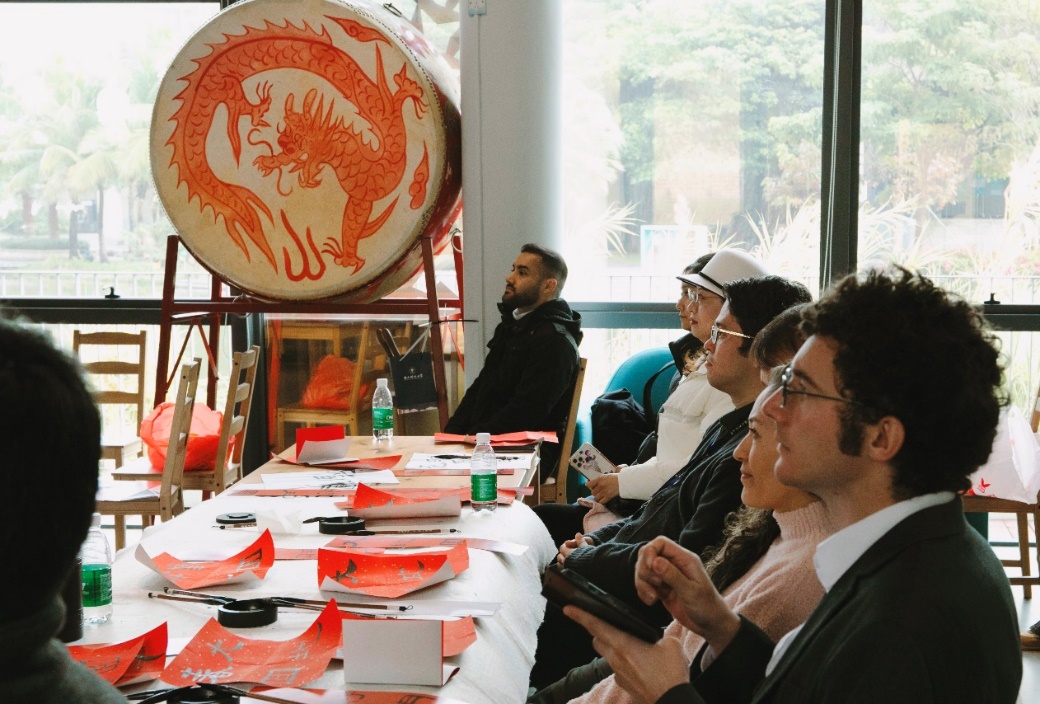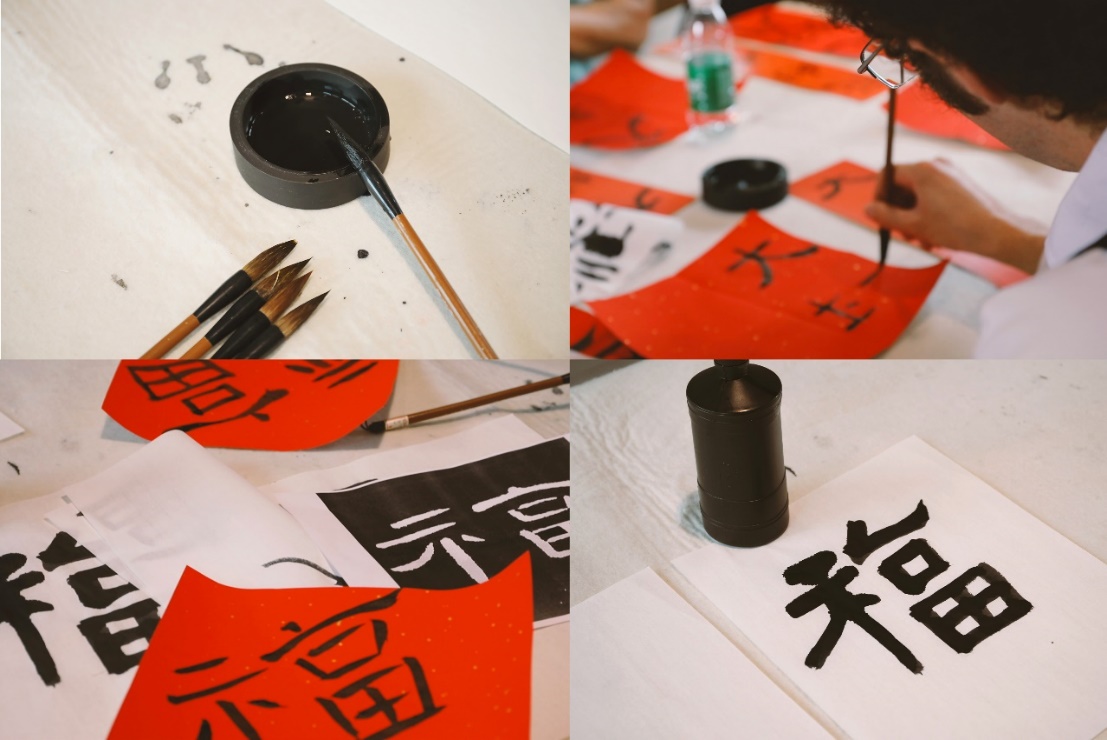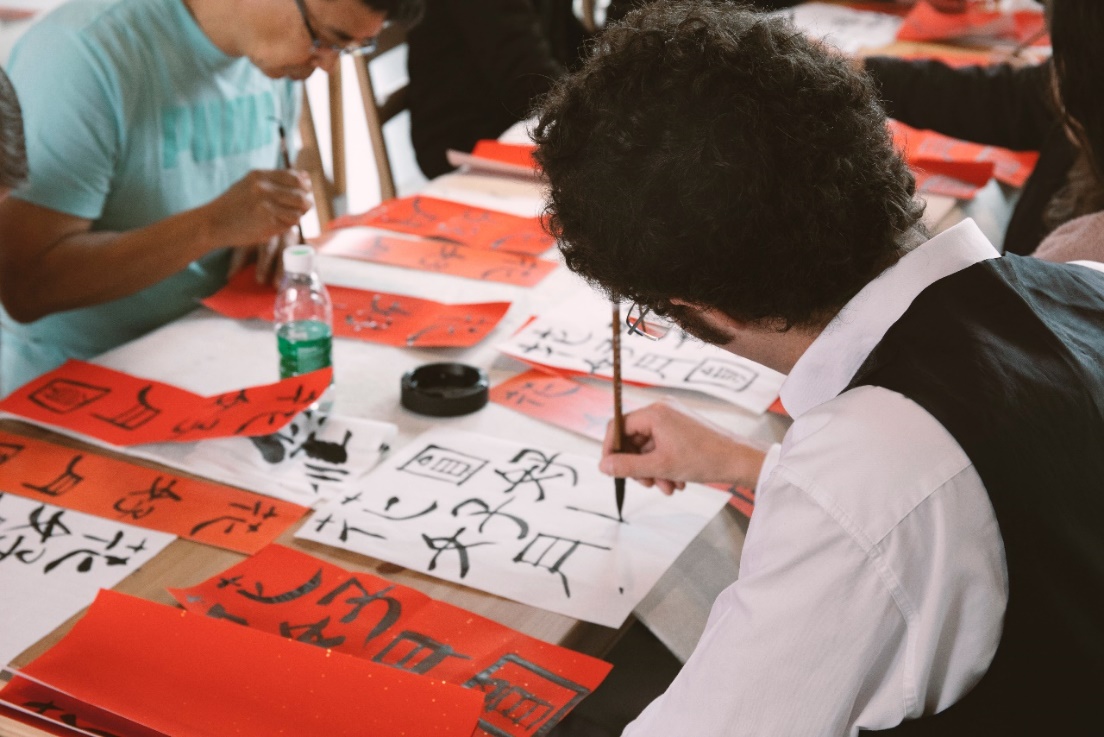Recently, a splendid, themed event to celebrate the Chinese language was held on campus. “The Beauty of Chinese Language: Learning Chinese Culture Through Chinese Calligraphy” was hosted by the Center for Language Education (CLE) in the Zhiren Activity Room on December 28th. The event was well received by the SUSTech international colleagues and served as an occasion to celebrate the upcoming Chinese Spring Festival.

Dr. ZHAO (first row, third from left) and the participants with their work
This themed event also served as the special ending session of the CLE Staff Chinese course in the 2021 Fall semester. The course instructor, Dr. Wenhui ZHU, delivered a lecture on the Chinese Spring Festival. The international faculty learned the origin and history of the festival as well as the related Chinese language for greetings, such as “Xin Nian Hao!” (新年好) and “Gongxi” (恭喜).

International faculty listening to the lecture about Spring Festival
The calligraphy aspect was seen as the highlight of the event. It started with the first character, Fu (福), meaning “good fortune” in Chinese. Following the demonstration of Dr. Hui ZHAO, Vice Dean of the College of Art and Design of Shenzhen University, the participants practiced writing Fu stroke by stroke. They felt the pressure and speed variations of the Chinese brush when writing Chinese calligraphy with traditional ink brushes. Then the participants challenged themselves by writing four-word Spring Festival blessings on red paper.

Components of penmanship in Chinese calligraphy: ink brush, ink slab, ink, and paper.
“As an art of turning Chinese characters into images, ancient Chinese calligraphers got their inspiration from nature and formed their unique style,” Dr. ZHAO shared with the participants. In his view, the key to creating a good piece of Chinese Calligraphy is to find a balance among the characters despite the variance of their stroke numbers.

International faculty writing Chinese Calligraphy
On this special occasion, the international faculty of SUSTech celebrated the Chinese Spring Festival, learned Chinese in the real context, and experienced the traditional Chinese art culture.